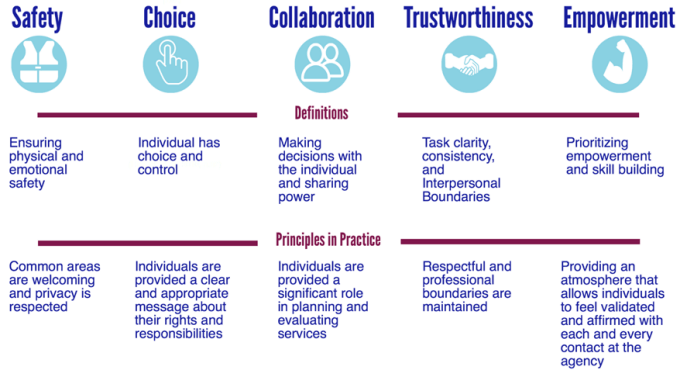Here at Lunar Lotus we seek to empower people to take back control over their lives, often after experiencing trauma. As such, we find it imperative for our teachers, and business partners to be educated in using a trauma-informed approach when working with clients.
But what is “Trauma-Informed” really? Other than a buzz word that is being thrown around on the internet.
What does it mean to be a trauma-informed person?
Trauma-Informed Care (TIC) is an approach in the human service field that assumes that an individual is more likely than not to have a history of trauma. Trauma-Informed Care recognizes the presence of trauma symptoms and acknowledges the role trauma may play in an individual’s life – including service staff.
As a practitioner, teacher, or instructor, in areas of service that are not licensed industries, it falls to the individual to assume the responsibility of becoming properly educated and competent in working with clients who have experienced trauma.
- It requires them to have gone through their own journey identifying how trauma has shown up in their own lives, and could therefore affect their listening.
- It means having discovered the importance of self-care, both mental, and physical, in order to show up fully present.
- It includes recognizing the impact of trauma exposure on staff (i.e. “secondary trauma”)
- It also includes learning and living by the 5 guiding principles, and reducing re-traumatization wherever possible.
What are the 5 steps of trauma-informed care?
The Five Guiding Principles are:
- Safety.
- Trustworthiness.
- Choice.
- Collaboration.
- Empowerment.

Adhering to these principles ensures an individual’s emotional and physical safety.
A Trauma-Informed Care approach strives to understand the whole of an individual who is seeking services. When trauma occurs, it affects an individual’s sense of self, their sense of others and their beliefs about the world. [1]
Creating a physically and emotionally safe environment, establishing trust and boundaries, supporting autonomy and choice, creating collaborative relationships and participation opportunities and using a strengths and empowerment-focused perspective to promote resilience are ways in which the principles of Trauma-Informed Care work to reduce re-traumatization and promote healing [2]
For this reason we only work with instructors that understand the importance of including a client’s whole being in the work that they offer. Even if their particular classes/techniques may not individually address the person as a whole, they understand that there are ripple effects with any such work, and are prepared to direct clients towards the appropriate resources outside of their own, whenever necessary.
Got Questions? Not sure exactly what kind of support you need? Feel free to reach out and/or
Schedule Your Free Consultation Call
References
- Harris, M. & Fallot, R. D. (Eds.) (2001). Using Trauma Theory to Design Service Systems. New Directions for Mental Health Services. San Francisco: Jossey-Bass.
- Substance Abuse and Mental Health Services Administration (2014). A Treatment Improvement Protocol: Trauma-Informed Care in Behavioral Health Services, Tip 57. U.S. Department of Health and Human Services, 14-4816.



